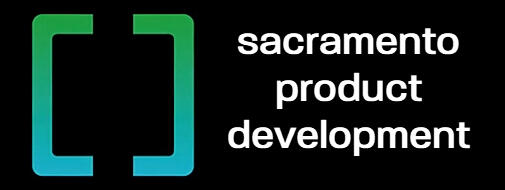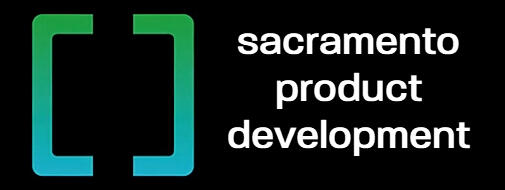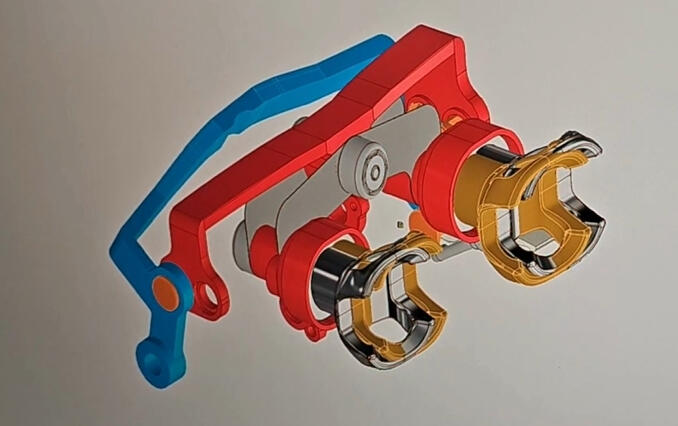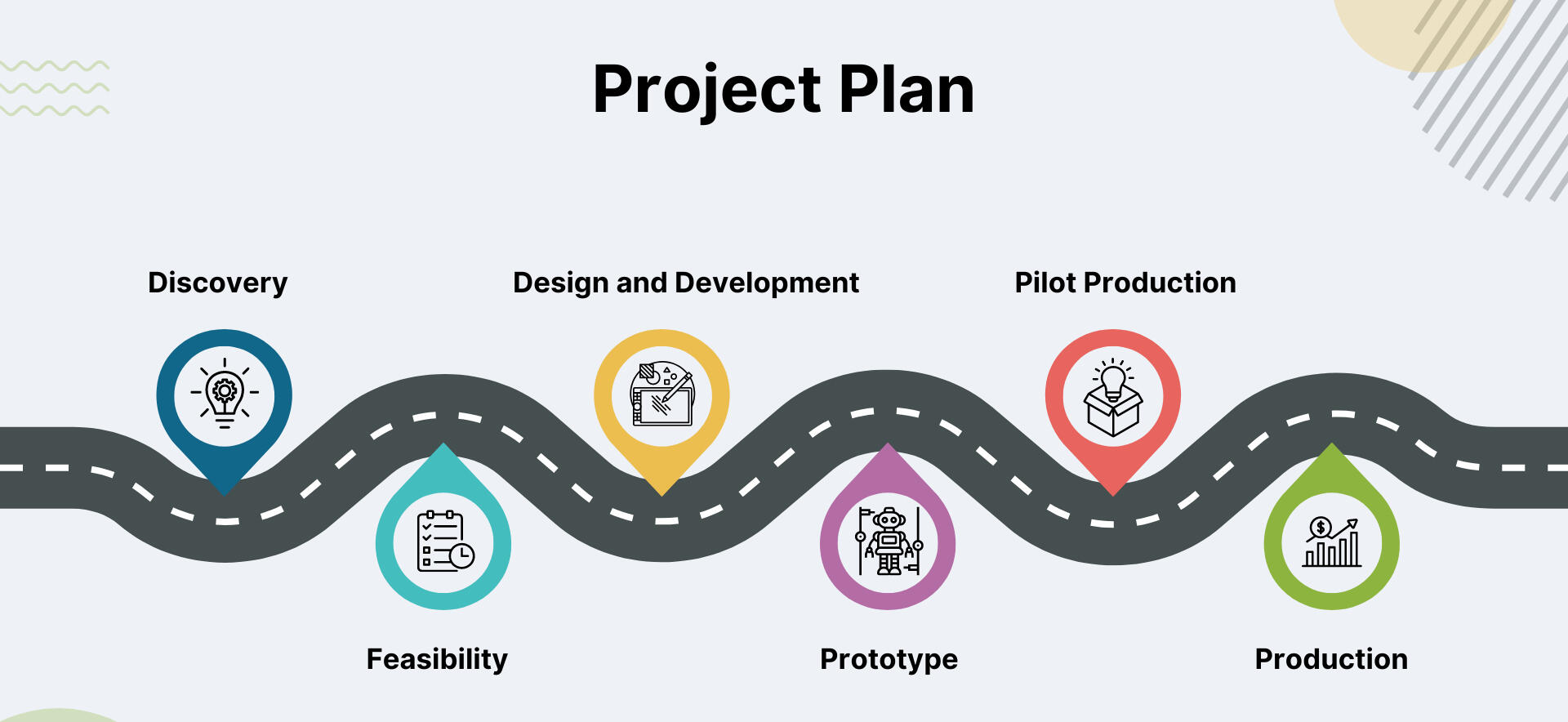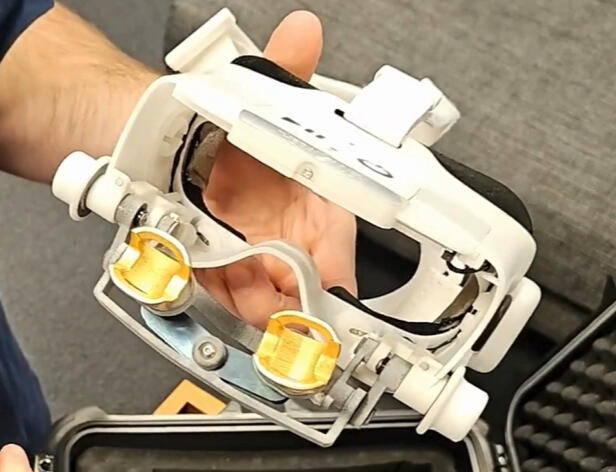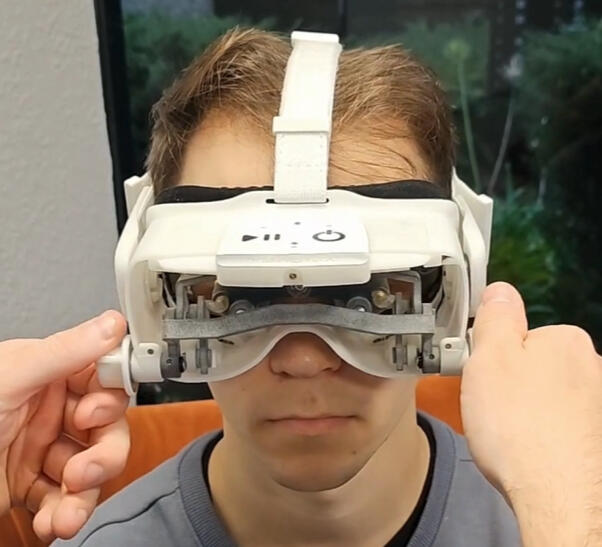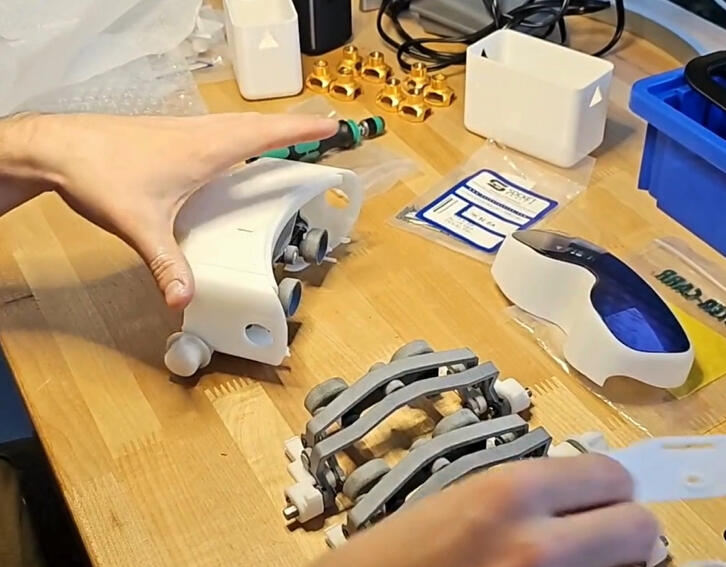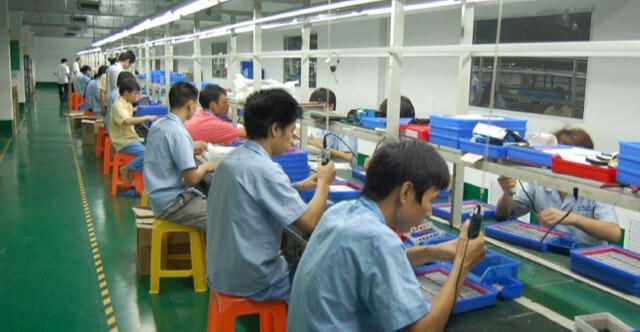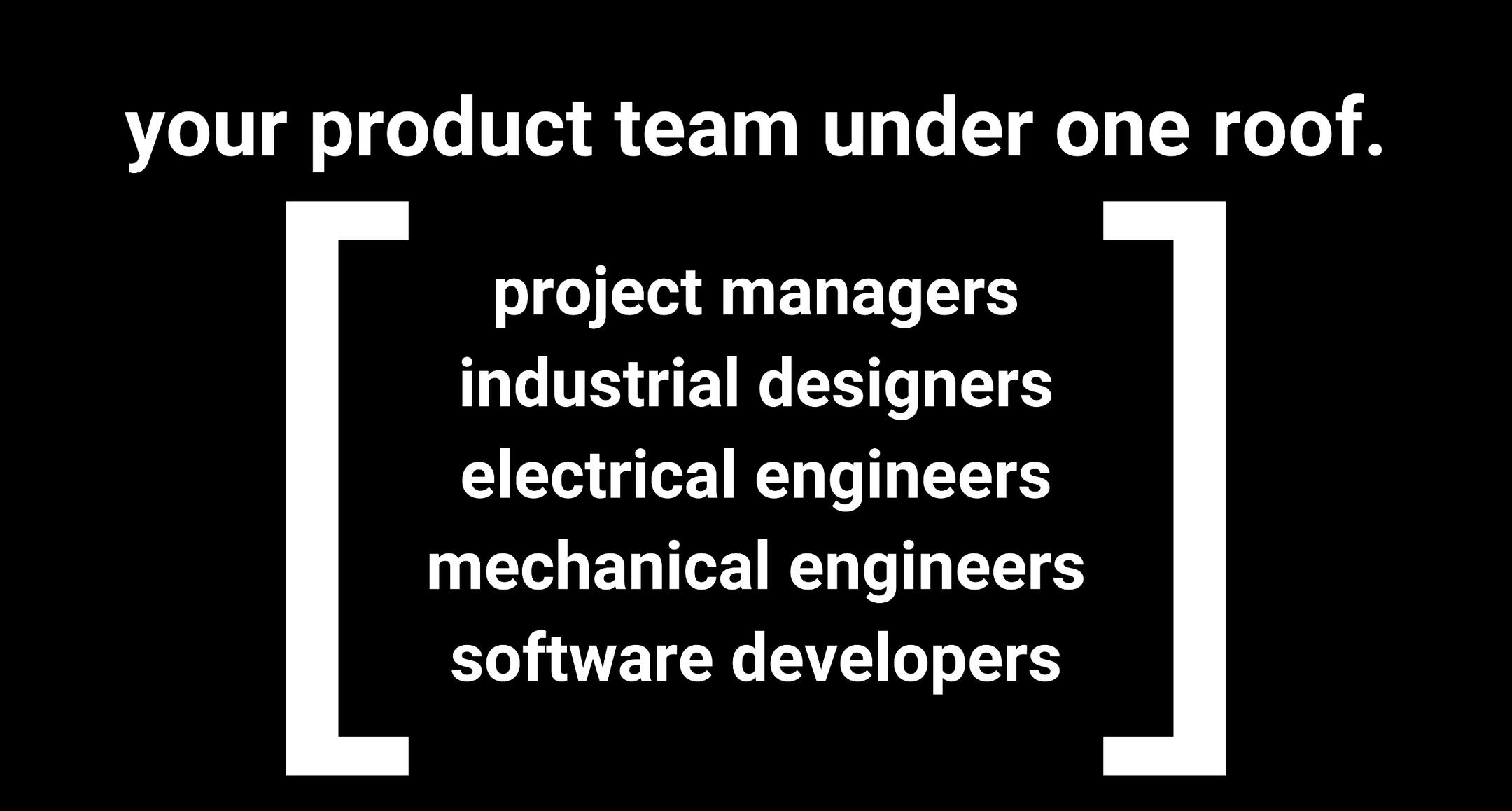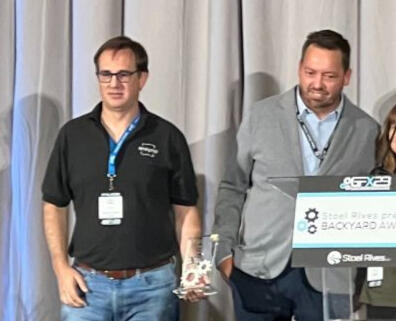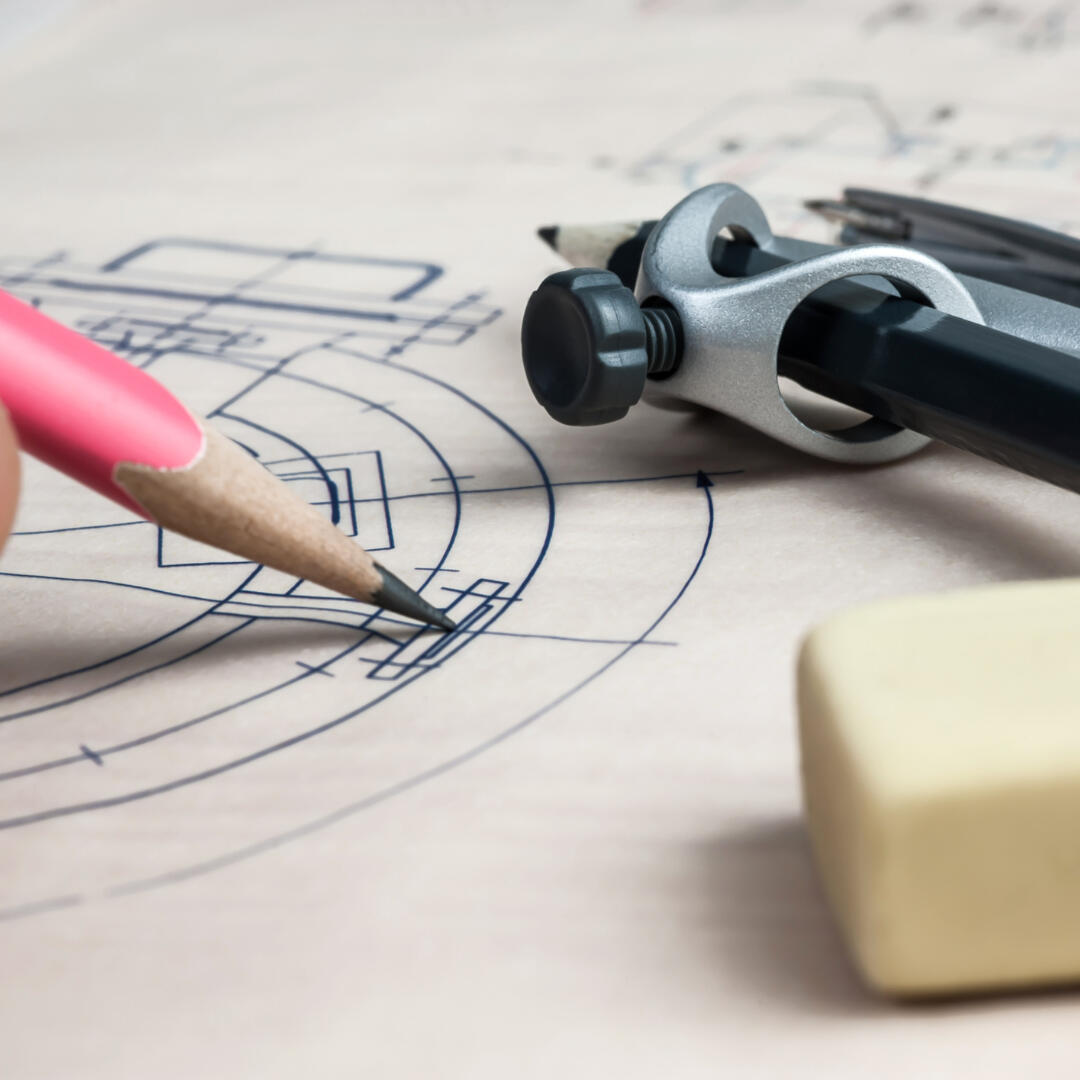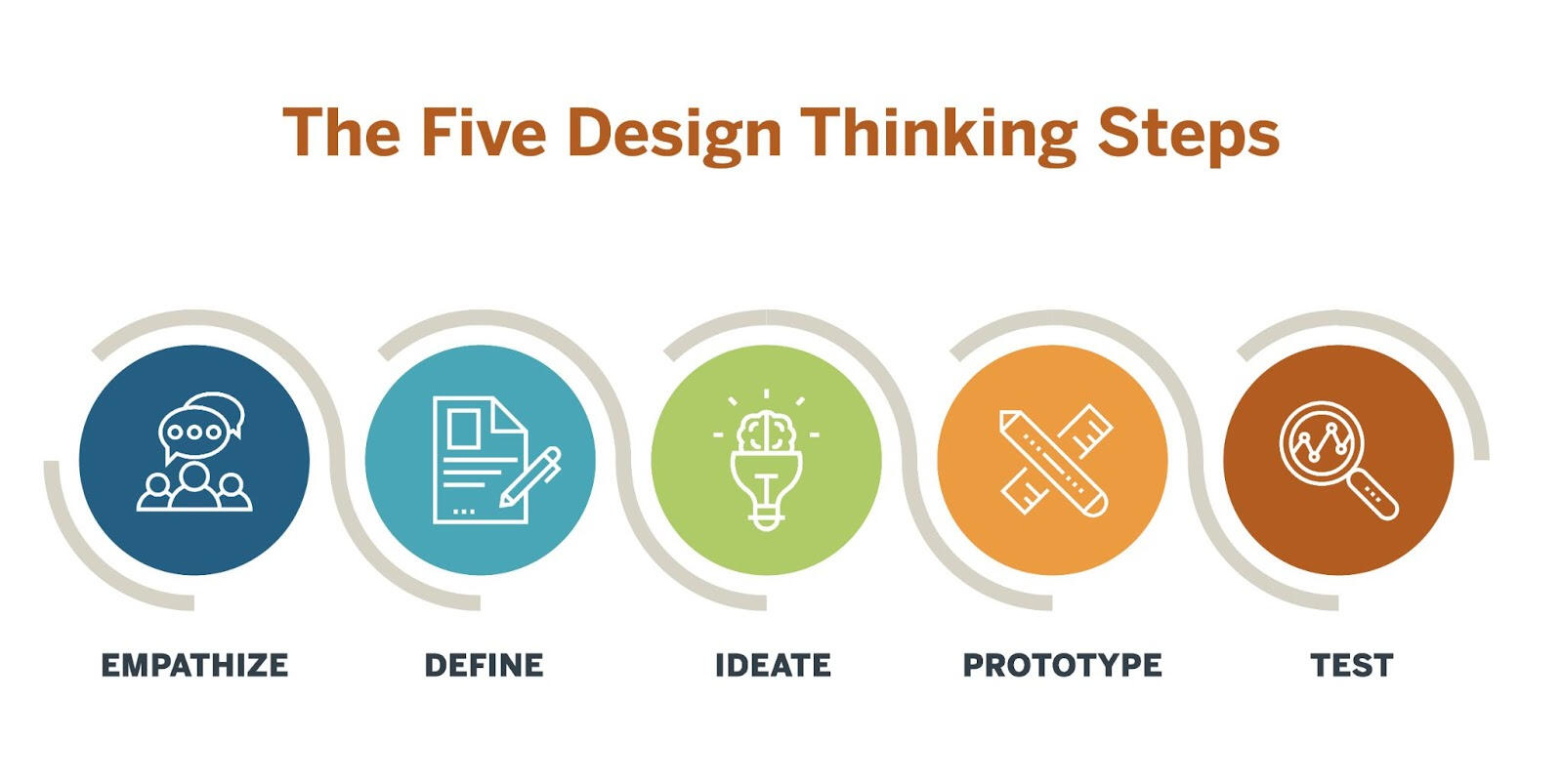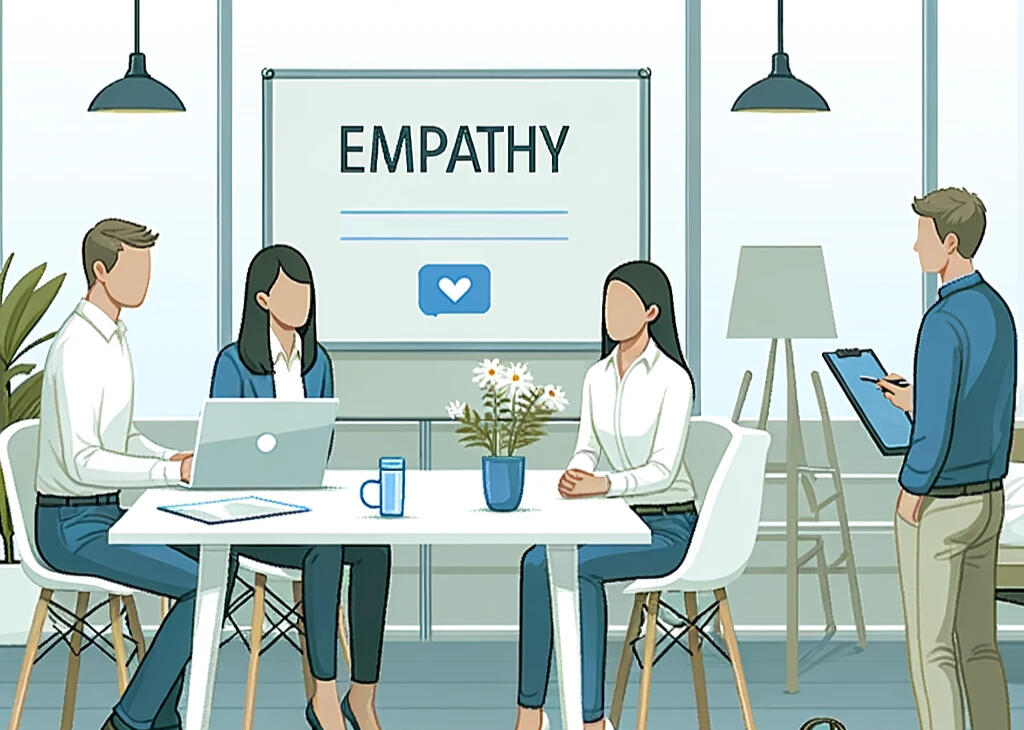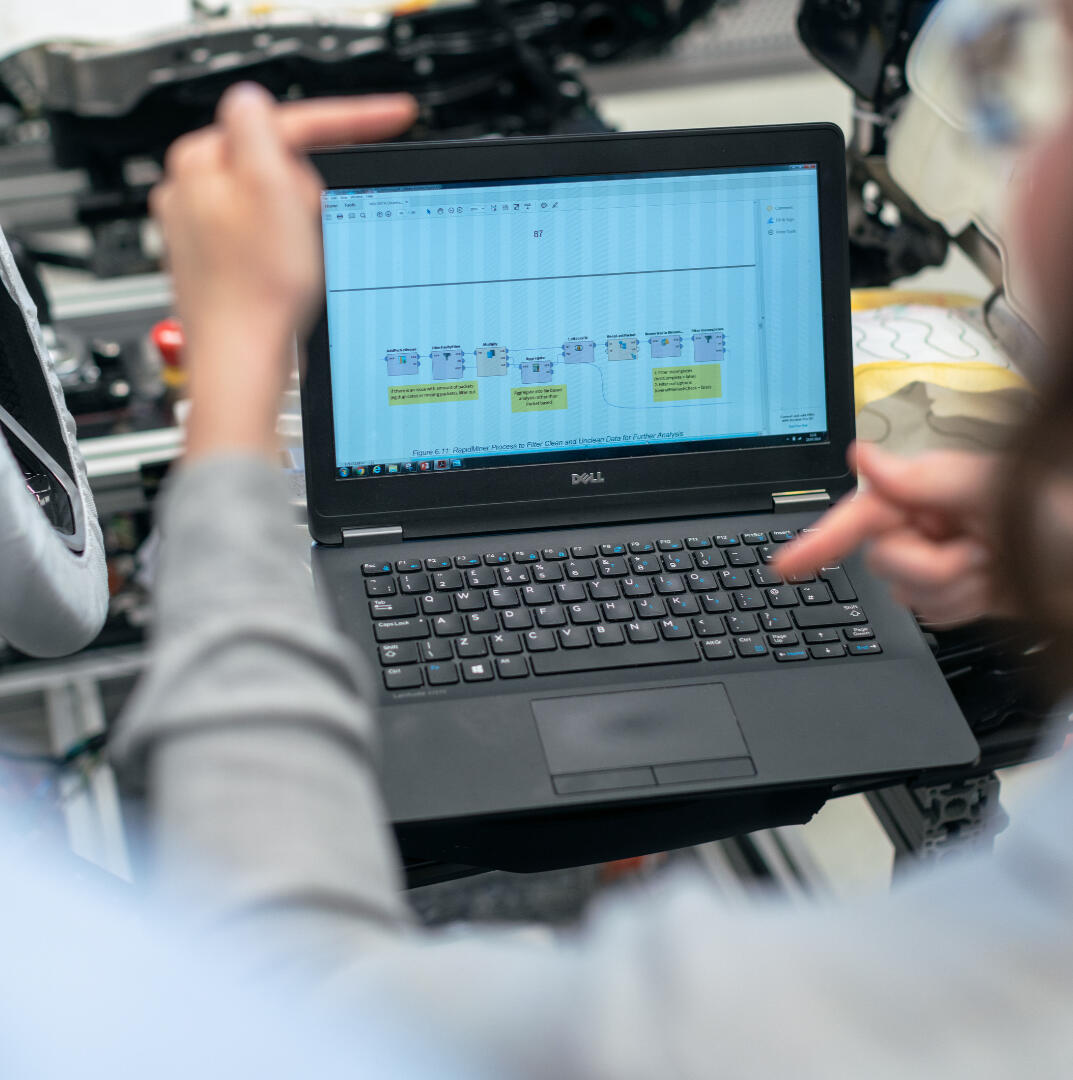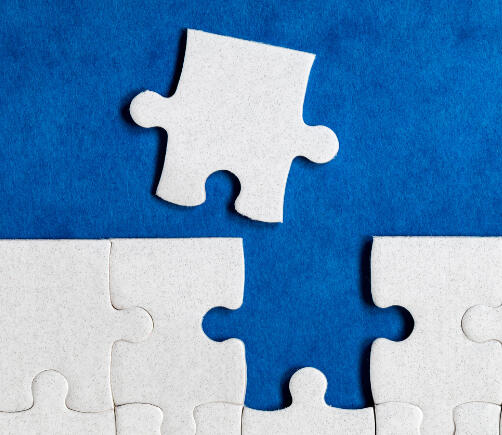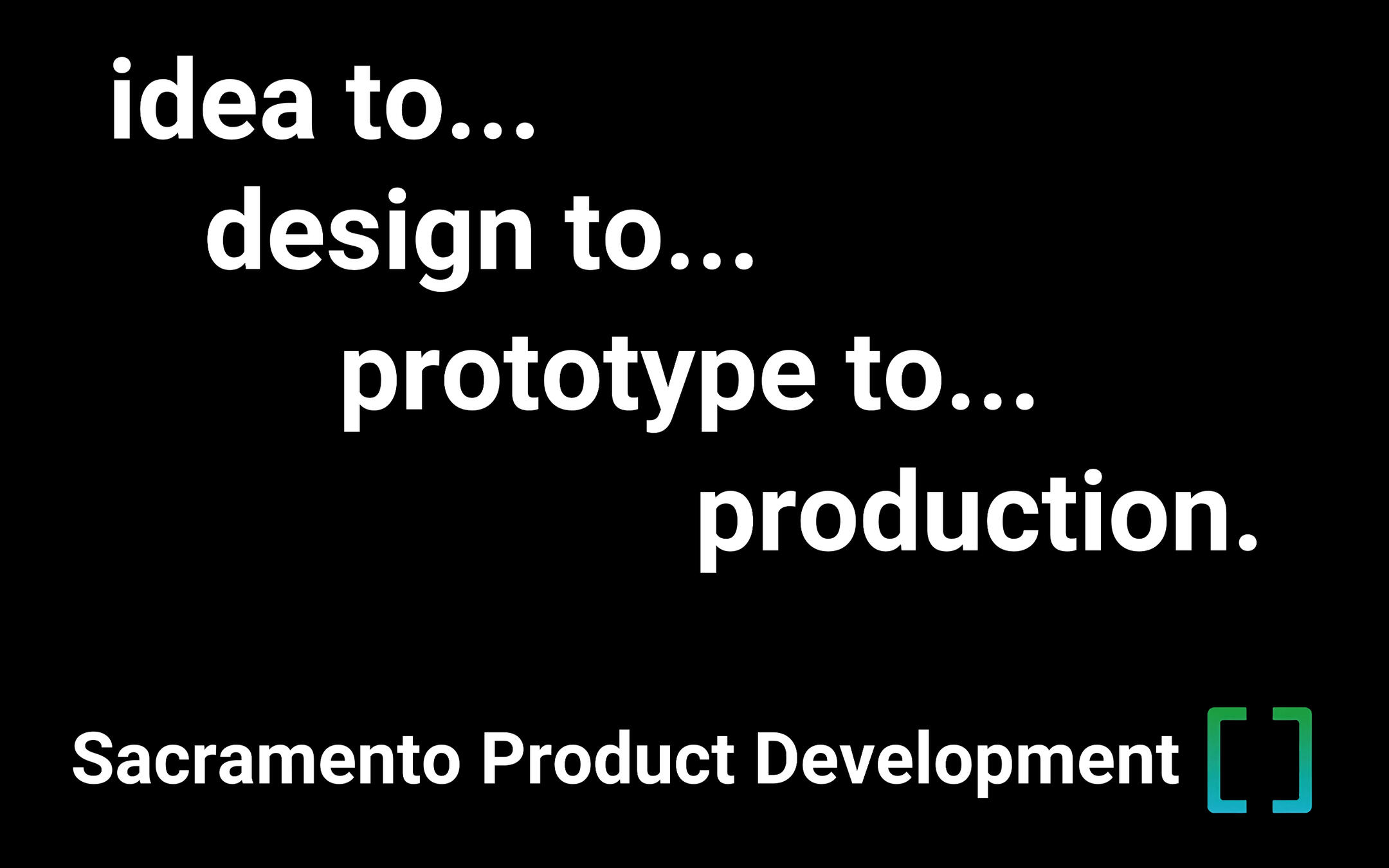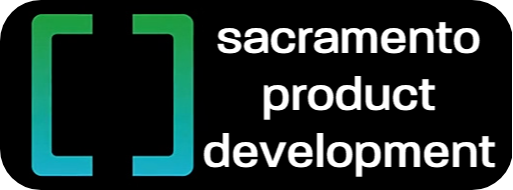Sacramento Product Development is a division of Ansync Labs headquartered in El Dorado Hills, California.
About Us
Innovation, Craftsmanship, and Your Vision Realized
Welcome to Sacramento Product Development, where your groundbreaking ideas are transformed into tangible, market-ready products. Our team of skilled developers, engineers, and innovators specialize in bringing hardware prototypes to life, complemented by comprehensive software and firmware support.Our Mission: Turning Ideas into Innovations
At Sacramento Product Development, our mission is to bridge the gap between conceptual ideas and real-world applications. We believe that every great product starts as a spark of imagination, and our role is to fan this into a flame of success.Our Expertise: A Blend of Technology and Creativity
Our team comprises seasoned professionals with deep expertise in engineering, design, and development. We stay at the forefront of technology, ensuring that we are always equipped to tackle the most challenging projects. Our diverse skills enable us to approach problems creatively, ensuring innovative solutions that are not only effective but also efficient and sustainable.Our Approach: Collaborative, Transparent, and Client-Focused
We work closely with you at every step, maintaining open lines of communication. Our process is transparent and inclusive, ensuring that you are involved and informed from the ideation stage to the final production. We understand the importance of your vision, and we dedicate ourselves to aligning our work with your goals.Our Legacy: A Track Record of Success
Since our inception, we've helped countless entrepreneurs, startups, and established companies turn their concepts into successful products. Our portfolio spans a wide range of industries, reflecting our adaptability and capability to meet various demands and challenges.Join Us: Your Partner in Product Development
At Sacramento Product Development, we're more than just a service provider – we're your partner in innovation. Whether you're at the initial concept stage or ready for productization, we're here to guide and support you through every phase of development.
Our Process
At Sacramento Product Development, we transform your innovative ideas into tangible realities. Our journey together encompasses the following key stages:1. Discovery: Learning and Understanding
Your vision is our starting point. In this initial phase, we immerse ourselves in your ideas, goals, and the challenges ahead. Our aim is to fully grasp the essence of what you're aiming to achieve, ensuring that every step forward is aligned with your vision.2. Viability Assessment: Business, Product, and Team
Next, we assess the feasibility of your concept. This involves a thorough analysis of business viability, product potential, and the alignment of our team with your needs. We delve into market research, cost evaluation, and resource allocation to ensure that your idea isn't just innovative, but also viable.3. Implementation Exploration: Mapping Technology to Your Challenge
Innovation meets practicality here. We explore existing technologies and how they can be applied or adapted to meet your specific requirements. This step ensures that we utilize the most efficient and effective technological paths for your project.4. Proposal: Your Customized Roadmap
Following our explorations, we present you with a detailed proposal. This roadmap outlines our approach, timelines, cost estimates, and the projected journey from concept to reality. It's your guide to what lies ahead.5. Initial Development: Proof of Concept (POC)
This is where ideas start taking a physical shape. We develop a Proof of Concept (POC) to demonstrate the feasibility of your product. This prototype is a tangible representation of your idea, allowing us to test, refine, and validate the concept.6. Productization #1: Beta Units for Select Users
With a successful POC, we move to the first stage of productization. Beta units are produced for a select group - often friends or close associates. This phase is crucial for gathering feedback, making adjustments, and preparing for a wider release.7. Productization #2: First Run for Early Customers
We then produce a first run for early adopters. These are typically customers who are closely aligned with your vision and willing to be the first to experience your product. Their feedback is invaluable for final refinements.8. Productization #3: Full-scale Production
Finally, we scale up to full production. At this stage, your product is ready for the broader market. We ensure that every unit meets our high standards of quality and reliability, ready to make an impact in the world.Join Us on Your Journey to InnovationReady to turn your vision into reality? Contact us at Sacramento Product Development, where your ideas are nurtured, developed, and brought to life. Let's embark on this journey together.
Testimonials
A great place for taking your ideas from concept to development to production. They can do it all. I've seen the projects first hand and they have tremendous talent. I've consulted with them on a few projects. I come from IoT and software development background, but I have a need for physical parts to be built and they are my go to place if I need design and fabrication. The team also helps me with any PCB and electronics questions/issues I run into. If you are looking for prototyping give them a call and get a tour of the lab.-Devaron Ruggiero
Portfolio
FloNoMo: Advanced Leak Detection and Prevention SystemFloNoMo is an innovative, self-sustaining device designed to offer leak detection and automatic water shutoff capabilities. Powered by a hydro generator, it not only identifies leaks with high precision but also recharges its battery, ensuring continuous operation. The system features an automatic solenoid valve that immediately cuts off water supply upon leak detection, significantly reducing the risk of water damage.Equipped with Wi-Fi connectivity, FloNoMo enables real-time monitoring and control through a cloud-based platform. Users can access a web-based dashboard to oversee toilet statuses, review historical data, and receive instant notifications about potential leaks. This makes FloNoMo an ideal solution for property managers and owners looking to safeguard their facilities from water-related issues, offering ease of management through advanced technology and remote access capabilities.
Discover the Sacramento Product Development AdvantageSacramento Product Development exemplifies the power of integrated product development. By uniting designers, project managers, electrical and mechanical engineers, and software developers under one roof, we offer a streamlined and efficient approach to bringing innovative products to market. Here's why partnering with us is a smart choice for those looking to lead in their industry.Efficient CommunicationOur team's co-location enhances direct communication, ensuring clear and quick exchange of ideas and feedback. This leads to a unified vision and faster decision-making throughout the development process.Collaborative InnovationOur interdisciplinary setup fosters a culture of collaboration, where diverse expertise converges to spark innovation. This approach allows us to tackle complex challenges creatively and deliver superior products.Market AgilityOur integrated team structure enables us to swiftly respond to market changes and customer feedback, significantly reducing the time from concept to market. This agility ensures our clients stay competitive and relevant.Uncompromised QualityQuality is at the core of our operations. The close collaboration across disciplines within our team ensures thorough quality checks at every development stage, resulting in a reliable and high-quality final product.Cost EfficiencyOur all-in-one approach reduces the need for external services, leading to significant cost savings for our clients. This efficiency, combined with a quicker time to market, maximizes the return on investment.A Unified Team CultureWorking with Sacramento Product Development means partnering with a team that shares a commitment to excellence, innovation, and client success. Our unified culture not only drives our projects but also ensures a positive and productive partnership.ConclusionSacramento Product Development is not just a provider but a partner in innovation. Our integrated approach not only accelerates the development process but also ensures the creation of products that stand out in quality and innovation. Partner with us to leverage the full spectrum of product development expertise, all under one roof, and turn your vision into a market-leading reality.
Blog
Getting It Built: From Prototype to Production
Sam Miller of Ansync Labs shared key insights at Startup Grind Sacramento on transitioning from prototype to production. He emphasized the need for:1. Funding and Marketing Strategy: Startups must plan their finances carefully, allowing for setbacks and pivots, and integrate marketing deeply into product development.2. Strong Vendor Relationships: Building long-term, mutually beneficial relationships with vendors is crucial, requiring thorough research and continuous communication.3. Balanced Production Approach: Deciding between domestic and overseas production involves considering labor costs, shipping, tariffs, and quality control to find a cost-effective yet quality-oriented balance.4. Precise Specifications: Providing vendors with detailed specifications and tolerances ensures quality and minimizes errors.5. Efficient Supply Funnel Management: Products should be built in stages, optimizing each step from component sourcing to assembly for efficiency and cost-effectiveness.Miller's presentation highlighted that successful transition from prototype to production requires meticulous planning, strategic partnerships, and a balance of domestic and overseas production to build a quality product efficiently.
Blog
Ansync Labs Receives Ecosystem Builder Award
Ansync Labs, the parent company of Sacramento PCB Assembly, recently received the Ecosystem Builder Award at the GFX2023 Backyard Awards. This award acknowledges their significant contributions to the entrepreneurial ecosystem in Northern California, particularly in the Greater Sacramento area. As a multidisciplinary design and manufacturing firm, Ansync Labs, with its team of diverse engineers and in-house facilities, is committed to developing practical solutions in motors, automation, medical, and IoT devices. This recognition from the GFX2023 Backyard Awards, organized by Growth Factory and Stoel Rives, underlines Ansync Labs' dedication to fostering local entrepreneurship and innovation, motivating them to continue making a positive impact in the region.
Blog
AI-Powered Edge DevicesThe integration of artificial intelligence (AI) into edge devices marks a shift in data processing and analysis, moving closer to where data originates. This blog delves into the essence of AI-enabled edge devices, their benefits, and their impact on various industries.What is an Edge Devices?Edge devices are hardware that manages data flow at the boundary between two networks, typically located near data sources like sensors and smart appliances. They stand out for their ability to process data locally, reducing reliance on central data centers or cloud services.AI IntegrationAI capabilities embedded in edge devices allow for on-site data processing, enabling real-time decision-making without the need for constant cloud connectivity. This is facilitated by advancements in compact AI models and hardware that support efficient, local computation.Advantages of AI-Enhanced Edge Devices- Reduced Latency: Local data processing ensures swift decision-making, essential for applications requiring immediate response, such as autonomous driving and smart manufacturing.
- Bandwidth Efficiency: By processing data locally, only essential information is sent to the cloud, conserving bandwidth.
- Privacy and Security: Local processing keeps sensitive data on-premise, enhancing data security and privacy.
- Operational Reliability: Independence from the cloud ensures uninterrupted operation, even in unstable network conditions.
- Scalability: AI on edge devices facilitates easy scaling, accommodating growing data volumes without overhauling central infrastructure.ApplicationsAI-enabled edge devices are transformative across sectors, from health monitoring and retail analytics to urban management, offering tailored solutions and insights in real-time.Future OutlookThe evolution of edge devices is expected to lean towards greater autonomy, with devices capable of adapting to their environments independently. This progression promises to unlock new efficiencies and innovations across industries.In summary, AI-powered edge devices are reshaping how we process and utilize data, bringing about significant improvements in response times, bandwidth usage, privacy, reliability, and scalability. Their continued development and integration into our digital infrastructure herald a future of enhanced autonomy and technological advancement.
Blog
Best Practices for Industrial Design
Imagine stepping into a world where every product you touch, from your sleek smartphone to the ergonomic chair you're lounging in, whispers tales of innovation, aesthetics, and user-centric design. Welcome to the realm of industrial design, a magical confluence of art, science, and technology. As we embark on this journey together, let’s uncover the best practices that not only shape remarkable products but also craft experiences that resonate with users on a deeply personal level.1. Embrace User-Centric DesignFirst off, let’s talk about putting the user in the spotlight. Picture yourself as a chef, concocting a dish that’s meant to tantalize the taste buds of your audience. Similarly, in industrial design, understanding the user’s needs, frustrations, and aspirations is paramount. It’s about empathy. Engage with your users, dive into their world through interviews, surveys, and observation. The goal? To design not just for them but with them, ensuring the end product fits into their lives as perfectly as that missing puzzle piece you found under the sofa.2. Sustainability is Not Just a BuzzwordNow, let’s wear our green hats – literally and figuratively. Sustainability in industrial design isn’t just about using recyclable materials; it’s a holistic approach that considers the entire lifecycle of a product. Think of it as planning a journey where you want to leave minimal footprints. From sourcing eco-friendly materials to designing for durability and ease of recycling, it’s about making conscious choices that benefit our planet. Let’s aim to design products that future generations will thank us for, not puzzle over in landfills.3. Foster Cross-Disciplinary CollaborationRemember those group projects in school where everyone brought something unique to the table? That’s the spirit we’re aiming for. Industrial design thrives at the intersection of diverse disciplines. Collaborate with engineers, marketers, psychologists, and even anthropologists to infuse your design with multifaceted insights. This melting pot of perspectives can lead to innovative solutions that might just be the next big thing. After all, it takes a village to design a product that stands out in today’s saturated market.4. Iterate, Iterate, and Then Iterate Some MoreIf at first, you don’t succeed, sketch, prototype, and test again. The path to perfection is paved with iterations. Each version brings you a step closer to that ideal balance between form, function, and feasibility. Use rapid prototyping tools and gather feedback early and often. This iterative process is like seasoning your dish to taste; small adjustments can make a world of difference in the final outcome.5. Embrace StorytellingEvery product has a story, a narrative that connects with users on an emotional level. Whether it’s the heritage of a brand, the inspiration behind a design, or the innovation that makes it unique, weaving a compelling story can captivate your audience. It’s about creating a bond between the user and the product, transforming everyday objects into treasured companions in life’s journey.6. Stay Curious and Continuously LearnThe world of industrial design is ever-evolving, with new technologies, materials, and trends emerging at the speed of thought. Keep your curiosity alive by staying abreast of the latest developments in the field. Attend workshops, read voraciously, and never shy away from experimenting with new ideas. Remember, in the quest for innovation, your next great inspiration might just be around the corner.Wrapping It UpAs we conclude our exploratory voyage through the best practices for industrial design, it’s clear that at the heart of great design lies a deep understanding of the human experience. Whether it’s through sustainable practices, collaborative efforts, or storytelling, the goal remains the same: to design products that enhance lives, respect our planet, and inspire the next generation of creators.So, to all the industrial designers out there, let’s roll up our sleeves and craft not just products, but legacies. Let’s design with purpose, passion, and a pinch of playfulness, for it’s in the joyful pursuit of solving problems that we truly make our mark on the world. Here’s to creating the future, one thoughtful design at a time. Cheers!
Blog
The Design Thinking Process OverviewDesign thinking has emerged as a powerful approach to problem-solving and innovation, widely adopted across industries to tackle complex challenges. This method hinges on understanding the needs of those you're designing for, leading to better products, services, and internal processes. In this blog, we'll delve into the core phases of the design thinking process, offering insights into how each step contributes to creating solutions that are both innovative and user-centric.1. Empathize: The Foundation of Design Thinking
The first phase, Empathize, is all about gaining an in-depth understanding of the problem you're aiming to solve. This involves engaging with and observing your target audience to grasp their experiences and motivations. Tools such as interviews, surveys, and shadowing are instrumental in this phase. The goal is to step into the users' shoes, setting aside your own assumptions to truly understand their needs and challenges.2. Define: Clarifying the Problem
With a wealth of insights gathered, the Define phase helps in pinpointing the exact problem to be solved. This step involves synthesizing the information collected during the Empathize phase to articulate a clear problem statement. This statement should be user-centered, focusing on the needs and problems of the users rather than the end solution.3. Ideate: Thinking Outside the Box
Ideation is where creativity comes into play. With a clear problem statement in hand, the Ideate phase encourages generating a wide range of solutions without judgment. Techniques like brainstorming, mind mapping, or sketching are commonly used. The key here is to explore a broad spectrum of ideas, encouraging wild, outside-the-box thinking that can later be refined and narrowed down.** 4. Prototype: Bringing Ideas to Life**
Prototyping is about translating the best ideas into tangible forms. This could range from paper sketches to digital mockups or even simple physical models. The prototypes don't have to be perfect; they just need to embody the concept in a form that can be tested and explored. This phase is crucial for identifying flaws and areas for improvement in a low-risk environment.5. Test: Learning Through Feedback
Finally, the Test phase involves putting the prototypes in front of users to gather feedback. This iterative testing process can uncover insights that may lead to further refinements of the solution or even revisiting earlier phases. It's a stage for learning what works, what doesn't, and why. Testing ensures that the final solution is as effective and user-friendly as possible.Embracing Iteration: The Key to Success
A critical aspect of design thinking is its iterative nature. Rather than a linear progression, teams may circle back to earlier stages as they learn and uncover new insights. This iterative approach ensures that solutions are continuously refined and aligned with user needs.Final Thoughts
The design thinking process offers a structured framework for innovation that prioritizes the user at every stage. By empathizing with users, defining clear problems, ideating creatively, prototyping ideas, and testing solutions, organizations can tackle challenges in a way that is both effective and deeply human-centered. Whether you're designing a new product, service, or process, integrating design thinking can lead to more innovative, user-friendly solutions that stand the test of time.
Blog
Empathy in Design ThinkingEmpathy stands at the core of the design thinking process, pivotal in ensuring that solutions genuinely resonate with users. This initial phase is dedicated to understanding users' needs, emotions, and experiences from their perspective, forming the bedrock for all subsequent design efforts. This concise exploration emphasizes the role of empathy in fostering innovative and user-centric solutions, detailing effective strategies for engaging with target audiences.The Role of EmpathyEmpathy in design thinking transcends mere observation, demanding a deep, immersive understanding of the user. It challenges designers to shed biases and assumptions, ensuring solutions are grounded in real needs rather than superficial perceptions. This empathetic approach is crucial for developing accurate problem statements and inspiring relevant, innovative solutions.Strategies for Building Empathy-User Interviews: Deep-dive conversations that reveal underlying motivations and challenges.
-Observation: Watching users in their environment to understand real-world interactions and obstacles.
-Persona Development: Crafting detailed user profiles to maintain a focused, user-centric perspective throughout the design process.
-Empathy Mapping: A technique that captures users' thoughts, feelings, actions, and words, offering a comprehensive insight into their experiences.The Impact of EmpathyEmpathy ensures that design solutions are deeply aligned with user needs, enhancing both the relevance and emotional resonance of the outcome. It fosters a more nuanced understanding of the user experience, leading to solutions that are not just functional but meaningful.Navigating Empathy ChallengesTrue empathy requires a commitment to understanding complex human experiences, a process that can be hindered by personal biases and preconceptions. Overcoming these challenges involves engaging with a diverse range of users and continuously questioning one's perspectives to gain a deeper, more authentic understanding.Final ThoughtsEmpathy is the essential foundation of the design thinking process, guiding designers towards solutions that are not only effective but profoundly connected to user needs. By adopting an empathetic mindset, designers can create impactful, user-centered designs that address real-world challenges in meaningful ways.
Blog
Define: Clarifying the Problem in the Design Thinking ProcessIn the design thinking journey, the "Define" phase acts as a critical bridge between understanding user needs and devising innovative solutions. This stage is about distilling insights gathered during the Empathize phase into a clear, actionable problem statement. It requires a shift from broad observation to focused clarity, ensuring that the design efforts are targeted and effective. This blog explores the significance of the Define phase, outlining strategies for effectively clarifying the problem and its impact on the design thinking process.The Importance of Defining the ProblemClarifying the problem is pivotal for several reasons. Firstly, it ensures that the design team has a shared understanding of the challenge at hand, preventing misalignment and scattered efforts. Secondly, a well-defined problem statement acts as a guiding light for ideation, focusing creativity on finding solutions that address real user needs. Lastly, it provides a benchmark for evaluating the success of the solutions developed, facilitating a targeted and iterative design process.Strategies for Effective Problem Definition1. Synthesize Insights: Begin by reviewing and synthesizing the data collected during the Empathize phase. Look for patterns, contradictions, and insights that reveal the users' core challenges and needs.2. Articulate User Needs and Insights: Translate your observations into actionable insights by articulating the users' needs clearly. This involves moving from specific observations to general insights, ensuring they are rooted in real user experiences.3. Craft a Problem Statement: Develop a concise, focused problem statement that encapsulates the challenge to be addressed. A good problem statement is user-centered, actionable, and specific, yet broad enough to allow for creative freedom in the solution.4. Reframe the Problem: Consider reframing the problem from different perspectives to explore new angles and uncover innovative solution pathways. This can involve asking "How might we...?" questions that open up the space for creative exploration.The Impact of a Clear Problem DefinitionA clear problem definition has a profound impact on the design thinking process. It narrows down the focus to the most critical user needs, ensuring that the design efforts are not only efficient but also effective. It enables the team to generate more relevant and impactful ideas during the Ideation phase, as solutions are directly tied to the defined problem. Moreover, it facilitates a more focused and constructive Prototyping and Testing phase, as the criteria for success are clearly outlined from the outset.Overcoming Challenges in Problem DefinitionDefining the problem can be challenging, particularly in complex or ambiguous contexts. It requires a balance between specificity and openness, ensuring the problem is defined clearly enough to guide the design process while allowing enough flexibility for creative solutions. To overcome these challenges, it's essential to engage in continuous dialogue with the user, involve diverse perspectives in the problem definition process, and be willing to revisit and refine the problem statement as new insights emerge.Final ThoughtsThe Define phase is a cornerstone of the design thinking process, transforming empathy into action by clarifying the problem to be solved. It sets the direction for all subsequent design efforts, ensuring that solutions are deeply rooted in addressing real user needs. By effectively defining the problem, design teams can unlock their creative potential, paving the way for innovative solutions that make a tangible difference in users' lives.
Blog
Ideate: Unleashing Creativity in Design ThinkingThe Ideate phase is a pivotal moment in the design thinking process where creativity and innovation take center stage. This stage is all about generating a wide range of ideas, pushing beyond conventional solutions to discover novel approaches to the defined problem. It’s where the groundwork laid by empathizing with users and defining the problem blooms into a diverse array of potential solutions. This blog explores the essence of the Ideate phase, offering insights into its importance and providing strategies for effective ideation.The Essence of IdeationIdeation is the heart of the creative process in design thinking. It’s where teams diverge in their thinking, exploring the breadth of possibilities without the constraints of practicality or feasibility—at least initially. This phase encourages looking at the problem from various angles, challenging assumptions, and leveraging creative thinking techniques to unearth innovative solutions.Why Ideation MattersThe power of ideation lies in its ability to break free from the status quo and envision what could be. It moves beyond the obvious answers, allowing teams to discover unexpected and groundbreaking solutions. By fostering a judgment-free environment, ideation ensures that even the most outlandish ideas have the space to be voiced and explored, leading to truly innovative outcomes.Techniques for Effective Ideation1. Brainstorming: Perhaps the most well-known technique, brainstorming is about generating as many ideas as possible in a group setting, encouraging free association and creativity.2. SCAMPER: An acronym for Substitute, Combine, Adapt, Modify, Put to another use, Eliminate, and Reverse, SCAMPER is a method that prompts teams to think about a problem or product in different ways.3. Mind Mapping: This visual tool helps in branching out ideas from a central concept, facilitating a non-linear thinking process that can reveal unexpected connections and insights.4. Storyboarding: By creating a visual narrative of how users might interact with a product or service, storyboarding can help teams envision solutions and explore different user scenarios.Nurturing a Creative EnvironmentCreating an environment that nurtures creativity is crucial during the ideation phase. This means establishing a space where all ideas are welcomed, and judgment is suspended. Encouraging diverse perspectives, fostering a culture of curiosity, and allowing for playful exploration are key elements in making the ideation process fruitful.Moving Beyond IdeationWhile ideation is about divergent thinking, it’s followed by a convergence phase where ideas are evaluated and narrowed down. This transition from ideation to prototyping is critical, as it moves the design process from the abstract realm of ideas to tangible solutions that can be tested and refined.Final ThoughtsThe Ideate phase is where creativity in the design thinking process is fully unleashed. By employing various techniques and fostering an environment that encourages free thinking, teams can generate innovative solutions that truly meet user needs. Moving beyond conventional thinking, the Ideate phase is a testament to the power of creativity in solving complex problems, making it an indispensable part of the design thinking journey.
Blog
Prototype: Bringing Ideas to Life in Design ThinkingThe Prototype phase is a dynamic and exciting stage in the design thinking process, where ideas start to take tangible form. After the creative flurry of the Ideate phase, prototyping serves as the critical bridge to reality, translating abstract concepts into physical or digital models. This stage is essential for exploring the viability of solutions, facilitating early feedback, and iterating designs. This blog delves into the Prototype phase, discussing its importance, the types of prototypes that can be developed, and strategies for effective prototyping.The Purpose of PrototypingPrototyping is about experimentation and learning. It's the process of creating quick, scaled-down versions of a product or feature to test hypotheses about a new idea. The goal is not to develop a finished product but to learn about the strengths and weaknesses of the idea and how it could be improved. Prototypes make it possible to gather concrete feedback from users and stakeholders, providing invaluable insights that guide further refinement.Types of Prototypes1. Low-Fidelity Prototypes: These are simple, often hand-drawn or crafted models that convey the basic features or concepts of a design. Low-fidelity prototypes are quick and inexpensive to create, making them ideal for testing broad concepts and early-stage ideas.2. High-Fidelity Prototypes: More sophisticated and closer to the final product, high-fidelity prototypes provide a more realistic user experience. They are useful for testing specific interactions and functionality, although they require more time and resources to develop.3. Digital Prototypes: Created using prototyping software, digital prototypes are effective for testing user interfaces and interactions. They can range from basic clickable wireframes to fully interactive simulations.4. Physical Prototypes: For tangible products, physical prototypes are crucial for assessing form, ergonomics, and usability. These can be created using a variety of materials, from cardboard models to 3D-printed objects.Strategies for Effective Prototyping- Start Simple: Begin with low-fidelity prototypes to test broad concepts before moving on to more detailed models. This approach saves time and resources by identifying major issues early on.- Embrace Iteration: Prototyping is an iterative process. Be prepared to make quick adjustments based on feedback, learning from each iteration to refine the prototype.- Focus on Key Features: Concentrate on prototyping the core features of your solution. This helps to gather focused feedback on the most critical aspects of the design.- Engage Users Early: Involve users in the prototyping process as soon as possible. Real-world feedback is invaluable for validating assumptions and identifying unforeseen challenges.- Collaborate Across Disciplines: Effective prototyping benefits from diverse perspectives. Collaborate with team members from different backgrounds to enrich the prototyping process with varied insights and expertise.The Impact of PrototypingPrototyping is a powerful tool for innovation, allowing teams to explore multiple solutions quickly and with low risk. It brings ideas into the physical world, where they can be interacted with, tested, and improved. By making concepts tangible, prototyping facilitates a deeper understanding of how a solution meets user needs and fits within the broader system it will operate in.ConclusionThe Prototype phase is a crucial step in the design thinking process, turning ideas into actionable insights. By adopting a strategic approach to prototyping, teams can efficiently explore a wide range of solutions, refining their ideas based on real-world feedback. Prototyping not only accelerates the innovation process but also significantly increases the chances of developing solutions that are truly valuable to users.
Blog
Test: Learning Through Feedback in Design ThinkingThe Test phase is a pivotal stage in the design thinking process, where prototypes are exposed to real-world scenarios to gather insights and feedback. This phase is not merely about validation but is a learning opportunity to understand how users interact with prototypes, what works, what doesn't, and why. This blog delves into the essence of the Test phase, emphasizing its role in refining solutions, methods for effective testing, and the iterative nature of learning through feedback.The Essence of TestingTesting in design thinking goes beyond checking if a solution meets technical requirements; it's about empathetically engaging with users to see how the solution fits into their lives. It's the phase where assumptions are challenged, and user feedback becomes the bedrock for further refinement. The objective is to observe, learn, and iterate, ensuring that the final solution is as effective and user-friendly as possible.Strategies for Effective Testing1. User-Centric Testing: Engage real users in the testing process to obtain genuine feedback. Observing users as they interact with the prototype provides insights into usability issues and user needs that might not have been previously considered.2. Scenario Testing: Create real-life scenarios in which the prototype would be used. This helps in understanding the context of use and how the product or service performs under realistic conditions.3. Iterative Testing: View testing as an iterative process, not a one-off event. Use feedback to refine the prototype, and test again. This cycle of feedback and iteration is crucial for developing a solution that truly meets user needs.4. Feedback Loops: Establish clear feedback loops that allow for quick and direct insights from users. Whether through interviews, surveys, or observations, ensuring that feedback is actionable is key to effective iteration.Learning from FeedbackFeedback is a goldmine of insights, offering a direct line to user perceptions and experiences. The Test phase encourages a mindset where feedback is not seen as criticism but as a valuable input for improvement. Learning from feedback involves:- Analyzing User Interactions: Understanding how users interact with the prototype can reveal unexpected uses or misunderstandings, pointing to areas for enhancement.- Identifying Patterns: Look for patterns in feedback to identify common issues or areas of success, which can inform broader improvements in the solution.- Embracing Constructive Failure: Recognize that not all feedback will be positive, and some ideas may fail. This constructive failure is a vital part of the learning process, guiding teams away from unviable solutions and towards more effective designs.Final ThoughtsThe Test phase is an essential component of the design thinking process, emphasizing the importance of user feedback in refining solutions. By adopting effective testing strategies and fostering an attitude of learning from feedback, design thinkers can ensure their solutions are deeply rooted in user needs and experiences. The iterative nature of testing underscores the process of continuous improvement, highlighting that the journey from concept to solution is one of constant evolution and adaptation.
Blog
Embracing Iteration: The Key to Success in Design ThinkingIteration is the heartbeat of the design thinking process, a principle that champions continuous refinement and improvement. It’s a mindset that recognizes the journey to innovation is not a straight line but a cycle of learning, feedback, and growth. In design thinking, iteration is not merely a step but a foundational approach that permeates every phase, from Empathize to Test. This blog explores the critical role of embracing iteration in driving success in design thinking projects, highlighting strategies to cultivate this mindset and the benefits it brings.The Iterative MindsetAt its core, an iterative mindset is about being open to change and comfortable with uncertainty. It means viewing each version of a solution not as a final product but as a step closer to a more refined outcome. Iteration encourages designers to learn from each attempt, integrate feedback, and evolve their ideas with resilience and flexibility. This approach fosters a culture of experimentation, where failure is not a setback but a valuable source of insight.Strategies for Successful Iteration1. Set Clear Objectives: Establish specific, measurable goals for each iteration cycle. This focus helps to streamline efforts and ensure that each round of iteration brings you closer to your ultimate objective.2. Foster a Feedback Culture: Create an environment where feedback is actively sought, valued, and acted upon. Encourage diverse perspectives and constructive criticism, making it a pivotal part of the iteration process.3. Prototype Rapidly: Develop quick, low-fidelity prototypes that allow for fast testing and feedback. This approach reduces the investment in any single idea, making it easier to explore a wide range of solutions.4. Embrace Agile Principles: Borrowing from agile methodologies, break down projects into smaller, manageable tasks with regular check-ins and adjustments. This flexibility allows teams to adapt quickly to new insights and challenges.5. Celebrate Learning: Recognize and reward the learning that comes from each iteration. Highlighting progress and insights encourages a positive attitude towards iteration and resilience in the face of challenges.The Benefits of Embracing IterationEnhanced Creativity and Innovation: Iteration breaks the fixation on a single solution, encouraging exploration of diverse ideas and fostering creativity.Increased User-Centricity: Continuous feedback loops with users ensure that the evolving product or service remains closely aligned with their needs and preferences.Risk Mitigation: By testing ideas early and often, iteration helps identify potential issues before they become costly problems, reducing the overall risk of the project.Faster Time to Market: An iterative approach allows teams to identify the most viable solution quicker, accelerating the development process.Adaptability: In a rapidly changing environment, iteration empowers teams to pivot and adapt, ensuring that the final solution is relevant and effective.Final ThoughtsEmbracing iteration is crucial for success in design thinking. It’s a mindset that values continuous improvement, resilience, and adaptability, transforming the way teams approach problem-solving and innovation. By integrating iteration into every phase of the design thinking process, organizations can enhance creativity, increase user-centricity, mitigate risks, and accelerate development. Iteration is not just a method; it’s a philosophy that drives toward excellence, making it an indispensable part of achieving lasting impact through design thinking.
Blog
The Crucial Role of Market Fit in Product DevelopmentUnderstanding and achieving market fit is crucial for the success in developing a product. It's a concept that goes beyond mere product design and touches the very essence of business sustainability and growth. This article delves into the importance of market fit, illustrating why it's indispensable for entrepreneurs, startups, and established companies alike.Understanding Market FitMarket fit, often termed as "product-market fit," refers to the harmonious alignment between a product and the needs or desires of a target market. It's the point at which a product meets sufficient demand, solving specific problems or fulfilling particular needs of its intended customers. Achieving market fit signifies that a product is not just a novel idea but a viable, marketable solution that resonates with a significant segment of consumers.The Foundation of Business ViabilityThe journey to finding market fit is foundational to business viability. Without a product that addresses clear market needs or desires, companies risk investing in solutions with no definite audience or demand. This misalignment can lead to substantial financial losses, wasted resources, and, ultimately, business failure. On the contrary, a strong market fit underpins sustainable business models, enabling companies to scale efficiently and effectively.Customer-Centric Product DevelopmentThe pursuit of market fit encourages a customer-centric approach to product development. Instead of relying on assumptions or insular visions of what the market wants, companies are compelled to engage in deep market research, customer interviews, and iterative feedback loops. This process ensures that the product evolves in close response to actual customer needs and preferences, enhancing its market relevance and appeal.Accelerating GrowthAchieving market fit is often the catalyst for accelerated growth. Products that resonate with the market can leverage positive customer experiences, word-of-mouth, and organic growth channels more effectively. It's a critical milestone for startups seeking investment, as investors typically look for evidence of market fit as an indicator of potential return on investment. For established companies, market fit allows for more efficient allocation of marketing and development resources, focusing on areas of proven demand.Competitive AdvantageIn crowded markets, the degree of market fit can be a significant competitive advantage. Products that closely align with market needs are more likely to stand out among competitors, offering unique value propositions that are difficult to replicate. This not only helps in attracting a loyal customer base but also in defending market position against competitors.Navigating Market ChangesMarket fit is not a one-time achievement but a continuous pursuit. Markets evolve, customer preferences shift, and new competitors emerge. Companies must remain vigilant, constantly testing their products against market needs and being ready to pivot or iterate as necessary. This agility allows businesses to maintain or regain market fit, even as the external environment changes.Final ThoughtsThe importance of market fit in product development cannot be overstated. It is the linchpin that connects innovative ideas to market realities, ensuring that products not only solve problems but also find eager recipients. Achieving and maintaining market fit requires a relentless focus on the customer, a commitment to ongoing iteration, and an openness to learning and adapting. For businesses aiming for long-term success, market fit is not just a goal but a guiding principle in the journey of product development.
Blog
AMCYT Awarded Business Catalyst Grant
Congratulations to Gary Wilson, CEO, and the forward-thinking team at AMCYT, INC, on securing a $50,000 Business Catalyst Grant from El Dorado County. This grant acknowledges their innovative contributions to the biotech field, especially through the development of their flagship product, ROSE (Rapid Onsite Evaluation). With the collaboration of Sacramento Product Development, AMCYT, INC has successfully developed ROSE, a groundbreaking adequacy procedure that significantly reduces sampling errors during fine needle aspiration (FNA) biopsies. This method involves the immediate smearing of a tissue sample onto a glass slide, followed by staining and real-time microscopic evaluation. ROSE not only enhances the sensitivity and diagnostic yield of FNA biopsies but also facilitates further diagnostic triage by determining the necessity for additional samples and the best methods for preserving material for further analysis. Additionally, it minimizes the need for repeat sampling and decreases the risk of procedural complications. AMCYT, INC's work on ROSE, supported by Sacramento Product Development, is setting new standards in medical procedures, underscoring their commitment to improving healthcare outcomes.
Blog
Navigating the Product Development JourneyIn the dynamic world of startups, the ability to turn a groundbreaking idea into a tangible product is what separates dreamers from innovators. The product development journey is a critical path that every startup must navigate to bring their visions to market. This journey, which transitions from idea to design, design to prototype, and finally, prototype to production, is fraught with challenges but offers immense rewards for those who successfully traverse it. Let’s explore the essentials of this journey, offering insights and strategies for startups looking to make their mark.From Idea to Design: The Blueprint of InnovationThe first leg of the journey is transforming an abstract idea into a concrete design. This phase is all about fleshing out the details of what the product will be and how it will function. It involves extensive research to understand market needs, identify potential competition, and define the unique value proposition of the product. Startups need to employ creative and technical skills to sketch out their product, considering user experience, functionality, and aesthetics. The design phase culminates in a detailed blueprint that outlines the product's specifications, features, and operational mechanisms. This design acts as a roadmap for the development process, setting the stage for what comes next.Design to Prototype: The First Glimpse of RealityWith a design in hand, startups embark on the journey of creating a prototype. This stage is where ideas start to take physical or digital form, transforming sketches and specifications into a working model. Prototyping is crucial for several reasons—it allows startups to test their concepts, identify design flaws, and gather feedback from potential users. It’s an iterative process, where each prototype gets closer to the final product, refining the design based on real-world interactions. Prototypes range from basic models, used to convey the concept, to highly functional versions that closely mimic the final product. This phase requires startups to be agile, open to feedback, and ready to iterate on their design to perfect their offering.Prototype to Production: Scaling Your VisionTransitioning from a prototype to full-scale production is a significant milestone in the startup product development journey. It signifies that the product design has been finalized and is ready for mass manufacturing. This stage involves selecting the right manufacturing partners, determining the most cost-effective and efficient production methods, and planning for logistics and distribution. Quality control becomes paramount to ensure that each unit produced meets the startup's standards and provides the intended user experience. Startups must also prepare for the market launch, developing marketing strategies and sales channels to get their product into the hands of customers. The move to production is a testament to a startup's ability to turn their vision into reality, ready to make an impact on the market.ConclusionThe product development journey for startups is a testament to the power of innovation, perseverance, and strategic planning. From the initial idea to the design phase, through prototyping and onto production, each step is integral to creating a product that resonates with users and stands out in the market. For startups, navigating this journey successfully requires a balance of creativity, technical prowess, and business acumen. The path may be challenging, but the potential to bring a new product to life and make a mark on the world makes it a journey worth embarking on.
Blog
Best Practices for Enterprise Product Development
Product development is a critical and complex process for enterprises aiming to stay competitive and innovative in their respective markets. It involves the creation of new products or the improvement of existing ones to meet customer needs effectively. Here are some best practices for enterprises to ensure their product development efforts are successful:1. Understand Your Market and Customers- Market Research: Continuously gather and analyze data on market trends, customer preferences, and competitor activities. Use this information to identify opportunities for innovation or areas for improvement in existing products.
- Customer Feedback: Engage with your customers through surveys, interviews, and beta testing to understand their needs, expectations, and experiences with your products. This direct feedback is invaluable for tailoring your product development efforts.2. Foster a Culture of Innovation- Cross-functional Teams: Encourage collaboration between departments such as R&D, marketing, sales, and customer service. Diverse perspectives can lead to more innovative solutions and a more holistic understanding of product requirements.
- Fail Fast, Learn Fast: Create an environment where failure is seen as a learning opportunity. Rapid prototyping and iterative development processes allow for quick learning and adaptation.3. Implement Agile Development Practices- Iterative Development: Adopt agile methodologies that emphasize incremental development, where products are developed in small, manageable segments. This approach allows for flexibility in responding to changes and new insights.
- Continuous Integration and Deployment: Automate testing and deployment processes to streamline development and ensure high-quality outputs. Continuous feedback loops with stakeholders can help refine product features and performance.4. Focus on User Experience (UX) Design- User-Centered Design: Ensure that product development processes prioritize the user experience by incorporating UX design principles from the early stages. This includes understanding user needs, designing intuitive interfaces, and creating engaging experiences.
- Accessibility: Make sure your products are accessible to as wide an audience as possible, including people with disabilities. This not only expands your market but also complies with legal requirements in many jurisdictions.5. Leverage Data and Technology- Data-Driven Decisions: Use data analytics to inform decision-making processes. Analyzing customer data, usage patterns, and feedback can reveal insights that drive product innovation.
- Emerging Technologies: Stay informed about emerging technologies (e.g., AI, IoT, blockchain) that can be leveraged to enhance your products or create new offerings.6. Ensure Quality and Compliance- Quality Assurance: Implement rigorous testing and quality assurance (QA) processes to ensure products meet high standards of performance and reliability.
- Regulatory Compliance: Be aware of and comply with relevant regulations and standards in your industry. This is crucial for avoiding legal issues and building trust with customers.7. Effective Project Management- Clear Objectives: Define clear, measurable objectives for each development project, along with timelines and milestones. This helps in tracking progress and ensuring alignment with business goals.
- Risk Management: Identify potential risks early in the development process and establish mitigation strategies to address them proactively.ConclusionFor enterprises, product development is not just about creating new products; it's about solving problems, fulfilling needs, and delivering value in innovative ways. By understanding their market and customers, fostering a culture of innovation, and leveraging agile practices, data, and technology, enterprises can develop successful products that drive growth and competitiveness. Implementing these best practices requires a strategic approach and commitment from all levels of the organization, but the rewards in terms of market success and customer satisfaction can be substantial.
Blog
Product Development TrendsThe landscape of product development is undergoing a transformative shift, with emerging trends reshaping how companies innovate, design, and interact with their customers. These trends reflect a blend of technological advancements, sustainability concerns, and changing consumer expectations. Here's an overview of the most significant trends influencing product development today.1. Sustainability and Eco-Friendly Design: Companies are increasingly focusing on sustainable design, using biodegradable materials and emphasizing the entire lifecycle of a product to minimize environmental impact.2. IoT and Connected Devices: The proliferation of IoT technology is enhancing product functionality and user experience by enabling devices to communicate and gather data.3. Personalization and Customization: There's a growing trend towards offering personalized products tailored to individual customer preferences, leveraging data and technology to meet unique needs.4. Agile Methodologies: Agile frameworks are being adopted more widely in product development, emphasizing flexibility, collaboration, and rapid iteration to quickly respond to market changes.5. AI and ML Integration: AI and ML are revolutionizing product development by optimizing inventory management, personalizing customer experiences, and improving interaction through voice-activated capabilities.6. UI/UX Efficiency: There's an emphasis on improving UI/UX to enhance customer satisfaction, with intuitive design and user-centric prototypes playing key roles.7. Generative AI: This technology is automating design ideation and manufacturing processes, leading to cost and time savings, and improving market research through data analysis.8. Immersive 3D Design: Virtual, augmented, and mixed reality technologies are being used to create more engaging and realistic digital atmospheres, enhancing user experience and interaction.9. 5G Technology: The expansion of 5G networks is enabling new product use cases by allowing for the collection of more data at higher speeds and over greater distances.10. Rapid Product Development Feedback via Data: Companies are leveraging data collected from IoT devices to shorten product development cycles and quickly iterate on designs.11. Digital Design and Digital Twins: Digital twins and digital design practices are reducing errors and increasing efficiency in physical product development by using virtual models informed by real-world data.12. Collaboration in Development: Collaborative features in IDEs like Microsoft Visual Studio are boosting productivity by facilitating real-time collaboration among development teams.13. Democratized Data and Analytics: Access to centralized data insights is empowering teams across roles, making informed decision-making more accessible and enhancing agility in product development.14. Everything-as-Code Infrastructure: This approach is streamlining product development and management, ensuring consistency and efficiency across various aspects of the development lifecycle.15. Microservices Architecture: The adoption of microservices is increasing development speed and flexibility by allowing for the independent development and deployment of service components.16. Edge Computing Integration: This is optimizing real-time data processing by reducing latency, crucial for applications and devices that rely on immediate data analysis.17. AI-Enhanced User Personalization: AI-driven personalization is tailoring user experiences more precisely, boosting satisfaction and engagement by adapting to individual behaviors and preferences.These trends illustrate a dynamic landscape in product development, where sustainability, technological integration, and personalization are becoming increasingly central. Businesses and innovators that adapt to these trends will likely find themselves at the forefront of their industries, ready to meet the evolving needs and expectations of their customers.
Blog
Design Thinking in Product Development
Design Thinking is an innovative process that transcends traditional boundaries, fostering an environment where imagination meets functionality to create products that not only meet but exceed user expectations.The Essence of Design Thinking
Design Thinking is a non-linear, iterative process that teams use to understand users, challenge assumptions, redefine problems, and create innovative solutions to prototype and test. It consists of five phases—Empathize, Define, Ideate, Prototype, and Test—but is not necessarily sequential. Teams might find themselves looping through these stages multiple times as they refine their solutions.Empathize: Understanding the User
The first phase, Empathize, involves gaining an empathic understanding of the problem you are trying to solve, typically through user research. This stage is crucial for setting aside your own assumptions about the world and gaining real insight into users and their needs.Define: Framing the Problem
The Define phase focuses on synthesizing the collected information to define the core problems you have identified. This stage is about clarity and focus, ensuring that you are on the right path toward innovation.Ideate: Unleashing Creativity
Ideation is where creativity comes into full play. With a clear problem definition in hand, teams explore a wide variety of solutions through brainstorming, sketching, and prototyping. This phase encourages thinking outside the box and questioning the status quo.Prototype: Bringing Ideas to Life
Prototyping involves producing a scaled-down version of the product. This phase allows designers to investigate the problem solutions generated in the previous stages. Prototypes may be shared and tested within the team itself, in other departments, or on a small group of people outside the design team.Test: Learning and Refining
The Test phase is where the team sees how their prototypes perform in the real world. Feedback is crucial at this stage and may lead to further insights, which in turn may lead to the redefinition of the problem or the generation of new ideas.The Impact of Design Thinking
The application of Design Thinking extends beyond just products; it is equally effective in tackling complex problems in various sectors such as healthcare, education, and social innovation. By focusing on human values, Design Thinking helps to ensure that the products and services developed are not only technologically feasible and economically viable but also desirable.Implementing Design Thinking
Embracing Design Thinking requires a cultural shift within organizations, fostering an environment that encourages experimentation, collaboration, and user-centricity. Here are a few tips for implementing Design Thinking in your projects:Foster a collaborative environment: Encourage multidisciplinary teams to work together, breaking down silos and leveraging diverse perspectives.
Embrace experimentation: Foster a culture where failure is seen as an opportunity to learn and iterate.Stay user-focused: Continuously seek to understand and empathize with your users, ensuring their needs and experiences drive the development process.
Iterate, iterate, iterate: Be prepared to go back to the drawing board. Design Thinking is an iterative process that values feedback and learning at every step.Conclusion
Design Thinking offers a holistic framework for innovation, combining creative and analytical approaches to solve problems in a user-centered way. By adopting this methodology, businesses can unleash their creative potential, fostering an environment where innovation thrives, and user needs are met with elegant, effective solutions. Whether you're developing a new product, service, or strategy, Design Thinking can illuminate the path to breakthrough innovation, driving success in an increasingly complex and fast-paced world.
Blog
Ansync Labs Launches Sacramento Product Development
Sacramento Product Development, a new player in the product design and development industry, proudly announces its official launch. A division of Ansync Labs, this innovative company is dedicated to turning creative ideas into tangible, market-ready products.With a focus that ranges from both startups and the enterprise, Sacramento Product Development provides a comprehensive suite of services. These include hardware design and development including any needed electronics and the development of needed software and firmware support. Their team includes mechanical and electrical engineers and software developers. Their expertise lies in transforming client visions into functional, well-crafted consumer products.What sets Sacramento Product Development apart is their client-centered approach. The team is committed to a collaborative, transparent process that aligns closely with client goals. From the initial discovery and viability assessment to the proposal development and final productization stages, they ensure that every step is tailored to meet the specific needs of their clients.The launch of Sacramento Product Development marks a significant milestone in the consumer product industry in Sacramento. The company is ready to make a substantial impact by bridging the gap between innovative ideas and successful products.
For more information, please visit Sacramento Product Development.
Contact:Name: Rich Foreman
Title: Director of Marketing
Company: Sacramento Product Development
Phone: (916) 299-0275
Email: rich.foreman@ansync.com
Website: https://sacramentoproductdevelopment.com/
About Us
Sacramento Product Development is a division of Ansync Labs headquartered in El Dorado Hills, California. We serve the Northern California Region including Sacramento, Elk Grove, Roseville, Folsom, Rancho Cordova, Davis, Woodland, Citrus Heights, Rocklin, West Sacramento, Auburn, Lincoln, San Francisco, Oakland, San Jose, Berkeley, Palo Alto, Mountain View, Sunnyvale, Santa Clara, Redwood City, Menlo Park, Cupertino, Fremont, Hayward, San Mateo, Concord, Vallejo, Fairfield, Richmond, Daly City, San Rafael, Petaluma, Novato, Santa Rosa, Napa, Livermore, Pleasanton, Walnut Creek, Alameda, San Leandro, and San Ramon.
5175 Hillsdale Circle
Suite 157
El Dorado Hills, CA 95762
To learn more about our PCB Assembly Service visit: sacramentopcbassembly.com
To learn more about our X-Ray Inspection Services visit: sacramentoxrayinspection.com

